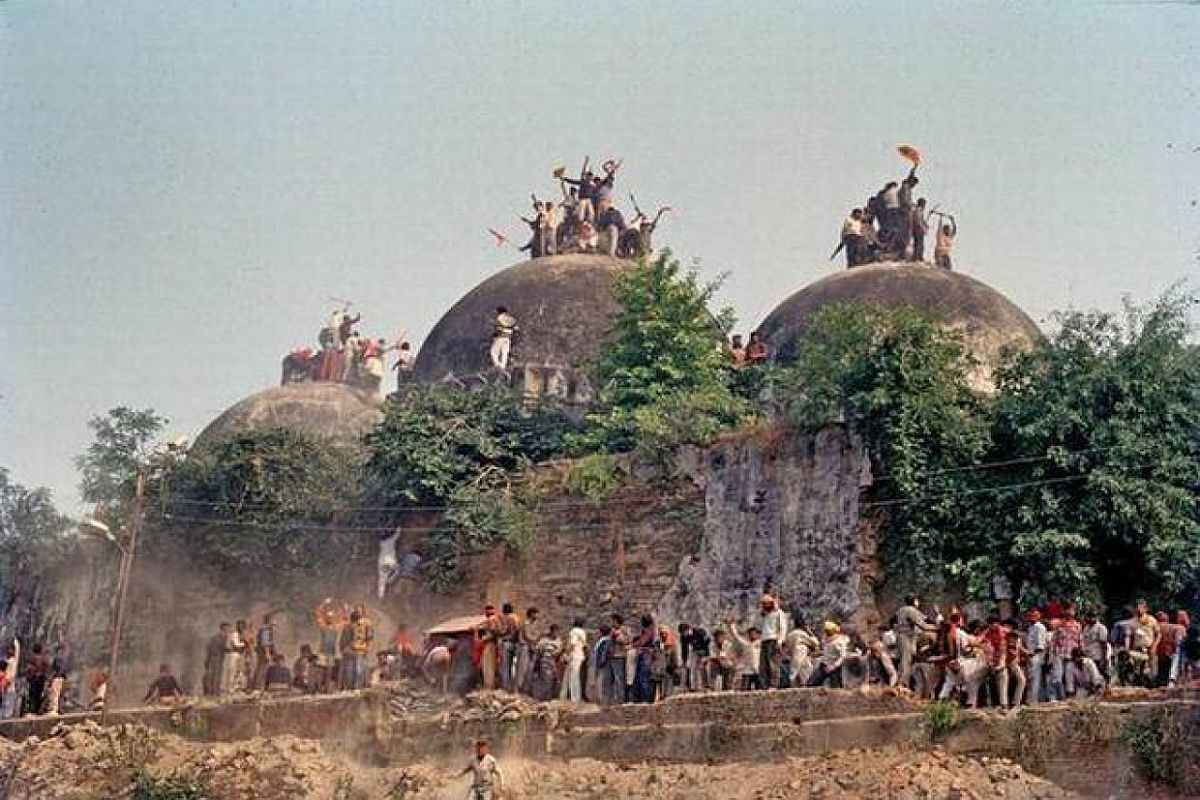India’s Got Latent: SC issues notice on YouTuber Ashish Chanchlani’s plea against FIRs
SC issues notice on YouTuber Ashish Chanchlani’s plea to quash or transfer FIR in India’s Got Latent case; tagged with Ranveer Allahabadia’s petition.
The apex court said that the run-up to the incident saw the posting of a police picket at the site on November 12, 1949, due to communal tensions.

The charges against the three leaders are of the conspiracy that led to the demolition of the mosque by the ‘kar sevaks’ on December 6, 1992. (Photo: Wikimedia Commons)
The incident of placing of idols inside the Babri Mosque in 1949, which was followed by attachment of the disputed land by a magisterial court, led to the filing of the first of five suits in connection with the controversial site, the Supreme Court has said in its historic verdict on the Ayodhya land dispute.
The apex court said that the run-up to the incident saw the posting of a police picket at the site on November 12, 1949, due to communal tensions.
Advertisement
Thereafter, a letter was sent to Faizabad District Magistrate KK Nayar by the senior police officer raising concerns that Hindus were likely to force an entry into the mosque to install idols there, the verdict said.
Advertisement
Subsequently, the Waqf inspector gave a report stating that Muslims were being harassed by Hindus when they sought to pray in the mosque, a five-judge Constitution bench headed by Chief Justice Ranjan Gogoi recalled in its Saturday’s judgement.
The bench noted that KK Nayar, who was also the Deputy Commissioner of Faizabad, had, however, sent a communication dated December 6, 1949, to the Uttar Pradesh Home Secretary stating there was no need to give credence to Muslims” apprehensions over the mosque’s safety.
On the intervening night of December 22-23, 1949, a group of about 50-60 people broke open the locks of the mosque and placed idols of Lord Ram under the central dome, leading to registration of an FIR in connection with the incident.
On December 26, 1949, in a letter to the UP Chief Secretary, KK Nayar expressed surprise over the incident but declined to carry out the state government’s orders to have the idols removed from the mosque.
He shot off another letter the next day stating that he would not be able to find any Hindu to remove the idols.
He proposed that the mosque should be attached by excluding both Hindus and Muslims, with the exception of a minimum number of pujaris.
Subsequently, terming the situation as an emergent one, the Additional City Magistrate of Faizabad-cum-Ayodhya on December 29, 1949 issued an order attaching the disputed site.
The Additional City Magistrate entrusted the site to Priya Datt Ram, chairman of the Municipal Board, who was also appointed as the receiver.
Thereafter, on January 16, 1950, a suit was instituted by a Hindu devotee – Gopal Singh Visharad – before the Civil Judge at Faizabad, alleging that he was being prevented by government officials from entering the inner courtyard to worship.
In arguments before the Allahabad High Court and the Supreme Court, the Nirmohi Akhara denied the occurrence of the event and claimed that the idols were always present below the central dome of the mosque.
The High Court in its verdict had held that the idols were placed inside the mosque on the intervening night of December 22-23, 1949 and that the Nirmohi Akhara had failed to establish that the idols had been in existence prior to that.
The apex court in its judgement said: “On a preponderance of probabilities which govern civil trials, the finding of the High Court that the idols of the deity were installed in the intervening night of December 22-23, 1949 commends itself for our acceptance.”
The Supreme Court in a historic verdict on Saturday backed the construction of a Ram temple by a trust at the disputed site in Ayodhya and ruled that an alternative five-acre plot must be allotted for construction of a mosque in the Hindu holy town.
The five-judge Constitution bench also comprised Justices S A Bobde, DY Chandrachud, Ashok Bhushan and S Abdul Nazeer.
Advertisement